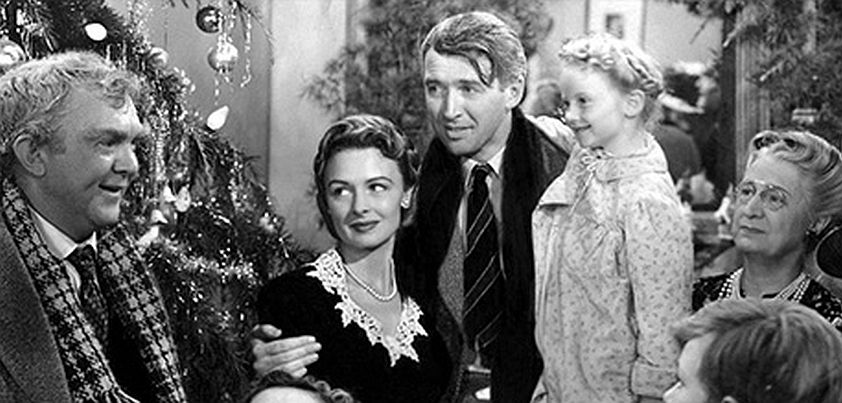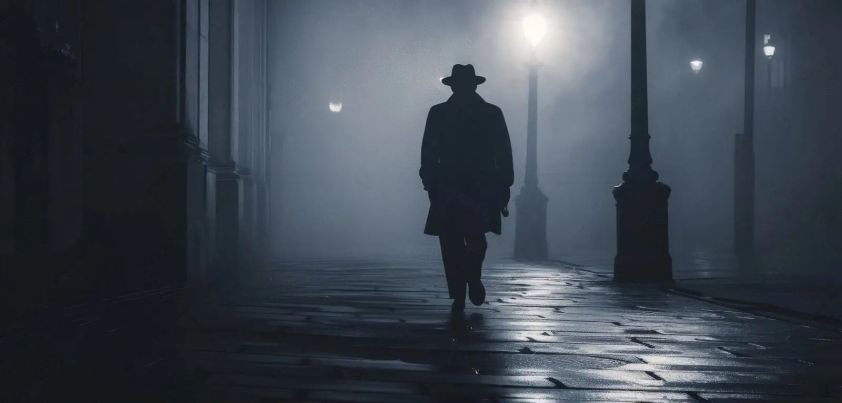 This story by Philip Van Doren Stern was the inspiration for the classic Christmas movie It’s a Wonderful Life. A depressed man standing on a bridge contemplating suicide confides to a stranger who joins him that he wishes he had never been born. His wish is mysteriously granted and he learns that, without his existence, his loved ones and the whole community would have suffered greatly. As he begs to be returned to his old self, he learns that God’s greatest gift of all is the gift of life. The major theme: every life has meaning and value. More…
This story by Philip Van Doren Stern was the inspiration for the classic Christmas movie It’s a Wonderful Life. A depressed man standing on a bridge contemplating suicide confides to a stranger who joins him that he wishes he had never been born. His wish is mysteriously granted and he learns that, without his existence, his loved ones and the whole community would have suffered greatly. As he begs to be returned to his old self, he learns that God’s greatest gift of all is the gift of life. The major theme: every life has meaning and value. More…
All posts by shortsonline
The Address
 Major themes of this story by Marga Minco are trust, betrayal, connection, and letting go. A young Jewish woman, the only member of her family to survive World War 2, visits a ‘friend’ of her mother’s with whom she had entrusted family valuables for safekeeping during the war. Her purpose is to ‘see, touch and remember’ the items, and perhaps to reclaim some to decorate her small rented room. The woman initially rebuffs her, and when she later returns and is admitted by the woman’s daughter, she sees her family’s prize possessions displayed and in daily use around the house. More…
Major themes of this story by Marga Minco are trust, betrayal, connection, and letting go. A young Jewish woman, the only member of her family to survive World War 2, visits a ‘friend’ of her mother’s with whom she had entrusted family valuables for safekeeping during the war. Her purpose is to ‘see, touch and remember’ the items, and perhaps to reclaim some to decorate her small rented room. The woman initially rebuffs her, and when she later returns and is admitted by the woman’s daughter, she sees her family’s prize possessions displayed and in daily use around the house. More…
Snowstorm
 This story by Bruna Dantas Lobato describes the experiences of a Brazilian college student studying in Vermont after a snowstorm. The focus of the story is the girl’s relationship with her anxious mother, with whom she speaks daily over Skype. The girl has remained in her dorm over the winter break and as expected, her mother issues warnings about every possible danger, fuelled by media reports and watching horror movies. The girl is equally concerned for her mother, who appears to be having more difficulty coping with the separation than she is. Themes include mother-daughter connection, separation anxiety, isolation and loneliness. More…
This story by Bruna Dantas Lobato describes the experiences of a Brazilian college student studying in Vermont after a snowstorm. The focus of the story is the girl’s relationship with her anxious mother, with whom she speaks daily over Skype. The girl has remained in her dorm over the winter break and as expected, her mother issues warnings about every possible danger, fuelled by media reports and watching horror movies. The girl is equally concerned for her mother, who appears to be having more difficulty coping with the separation than she is. Themes include mother-daughter connection, separation anxiety, isolation and loneliness. More…
Wakefield
 This Nathaniel Hawthorne story opens with a newspaper account of a man who ‘disappeared’ after telling his wife he was going on a week’s holiday, stalked her for twenty years, and then returned home as if nothing had happened. The narrator speculates that the man’s ‘holiday’ may have been a cruel joke to see how his wife would cope without him, and that he gradually became so enamoured with the isolated, clandestine existence that he found it difficult to return home to his former life. Themes include singularity, alienation and isolation, resilience (the wife’s life goes on), obsession, insignificance. More…
This Nathaniel Hawthorne story opens with a newspaper account of a man who ‘disappeared’ after telling his wife he was going on a week’s holiday, stalked her for twenty years, and then returned home as if nothing had happened. The narrator speculates that the man’s ‘holiday’ may have been a cruel joke to see how his wife would cope without him, and that he gradually became so enamoured with the isolated, clandestine existence that he found it difficult to return home to his former life. Themes include singularity, alienation and isolation, resilience (the wife’s life goes on), obsession, insignificance. More…
The Shadowy Third
 This psychological ghost story by Ellen Glasgow combines themes of the supernatural, crime (murder) and justice (revenge). A young nurse besotted by a popular doctor is assigned as night-nurse to his ailing wife. The woman, who is recovering from the death of her young daughter from a previous marriage, is suffering “hallucinations” that the girl is still alive. When the nurse claims that she, too, can see the spectral child, the mother confides that her husband killed her. The woman dies soon afterwards and, when the doctor claims her multi-million dollar estate, justice is served in an unexpected manner. More…
This psychological ghost story by Ellen Glasgow combines themes of the supernatural, crime (murder) and justice (revenge). A young nurse besotted by a popular doctor is assigned as night-nurse to his ailing wife. The woman, who is recovering from the death of her young daughter from a previous marriage, is suffering “hallucinations” that the girl is still alive. When the nurse claims that she, too, can see the spectral child, the mother confides that her husband killed her. The woman dies soon afterwards and, when the doctor claims her multi-million dollar estate, justice is served in an unexpected manner. More…